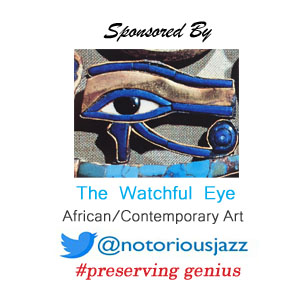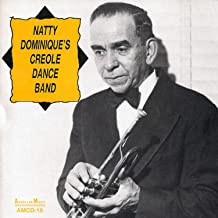
Daily Dose Of Jazz…
Anatie “Natty” Dominique was born on August 2, 1896 in New Orleans, Louisiana of Afro-Italian descent. Claiming to be a direct descendant of Dominique You, the half-brother of the pirate Jean Lafitte, he studied with Manuel Perez.
Moving to Chicago, Illinois in 1913, over the course of more than three decades there, Dominique played with a number of New Orleans jazzmen, including Louis Armstrong, Jimmie Noone, and especially Johnny Dodds, who employed him from 1928 until his death in 1940.
Shortly afterward, Natty was forced to retire due to a heart condition, keeping him out of the music business for almost a decade. Returning to part-time work with a small combo in the 1950s, he played up till his death.
Trumpeter Natty Dominique, who recorded for American Music Records, Challenge Records, and Black Swan Records, passed away on August 30, 1982 in Chicago.
More Posts: bandleader,history,instrumental,jazz,music,trumpet
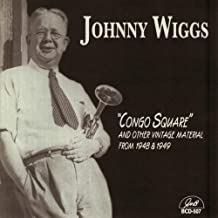
Daily Dose Of Jazz…
Johnny Wiggs, was born John Wigginton Hyman on July 25, 1899 in New Orleans, Louisiana. He started his music career on the violin but soon adopted the cornet. His main stylistic influences were Bix Beiderbecke and King Oliver, who Wiggs insisted did his best work in New Orleans in the years before he moved up North to New York City and was recorded.
Returning to New Orleans in the late 1920s, he took a job as a teacher in Louisiana and at night played in New Orleans jazz clubs. During this period in his life, he made his first recordings as John Hyman’s Bayou Stompers.
In the 1940s he returned to being a full-time musician, leading several bands and recording many songs. He used the pseudonym Johnny Wiggs, as jazz was still looked down on in some circles. He went on to be an important figure in the local traditional jazz revival.
The 1960s saw Wiggs performing part-time, remaining active until the Seventies. He mentored George Finola and Pete Fountain was one of his more famous pupils. He helped found the New Orleans Jazz Club and was a force behind the jazz revival in the 1940s.
Cornetist and bandleader Johnny Wiggs passed away on October 10, 1977 in his hometown of New Orleans.
More Posts: bandleader,cornet,history,instrumental,jazz,music
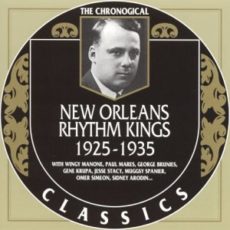
Daily Dose Of Jazz…
Paul Mares was born on June 15, 1900 in New Orleans, Louisiana and was self-taught on the cornet and trumpet and picked up his early experience laying the riverboat Capitol playing with the Tom Brown Band. Leaving his hometown in 1919 he moved to Chicago, Illinois and worked with Ragbaby Stevens before freelancing around the city.
In 1921 Paul formed the Friars Society Orchestra, a group that prominently featured trombonist George Brunies and clarinetist Leon Rappolo. From 1922-23, the band recorded for Gennett Records and became one of the best-regarded bands in the city. The band, which broke up in 1924, included up-and-coming jazz musicians, including the members of the Austin High School Gang and Bix Beiderbecke.
Mares who was influenced by King Oliver, played in New York for a short time, went back to New Orleans the following year and led a couple more sessions. In 1934, a move to Chicago the following year had him making a brief comeback and leading a recording session that resulted in four titles before he retired again.
By 1935 Mares he was playing trumpet and fronting a recording session with his band called Paul Mares and his Friars Society Orchestra. The name referred to the Friar’s Inn club where the Rhythm Kings had first played in Chicago. The 1935 band included the white New Orleanian and N.O.R.K. veteran Santo Pecora on trombone, the black New Orleanian Omar Simeon on clarinet and the Chicagoan altoist Boyce Brown, as well as George Wettling on drums, pianist Jess Stacey, bassist Pat Pattison, and guitarist Marvin Saxbe.
He then largely retired from playing to work in the family fur business, and the New Orleans Rhythm Kings passed into history. He ran a barbeque restaurant, did defense plant work during World War II, and returned to music in 1945, leading a final band from 1945-48 that unfortunately never recorded. Cornetist and trumpeter Paul Mares passed away on August 18, 1949 in Chicago.
More Posts: bandleader,cornet,history,instrumental,jazz,music,trumpet
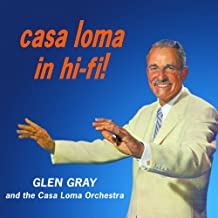
Daily Dose Of Jazz…
Glenn Gray Knoblauch was born on June 7, 1900 in Metamora, Illinois. Known professionally as Glen Gray, his father was a saloon keeper and railroad worker who died when he was two years of age. Along with an older sister, his widowed mother remarried a coal miner and moved her family to Roanoke. He went on to graduate from Roanoke High School, in 1917 where he played basketball and acquired his nickname, Spike.
Glen attended the American Conservatory of Music in 1921 but left during his first year to go to Peoria, Illinois, to play with George Haschert’s orchestra. From 1924 to 1929, he played with several orchestras in Detroit, Michigan.
In 1956, he went back into the studio to record the first of what became a series of LPs for Capitol Records, which recreated the sounds of the big band era in stereo. Casa Loma in Hi-Fi was the result, with 14 high-fidelity recordings.
Swing saxophonist Glen Gray passed away from lymphoma on August 23, 1963 in Plymouth, Massachusetts aged 63.
More Posts: bandleader,history,instrumental,jazz,saxophone
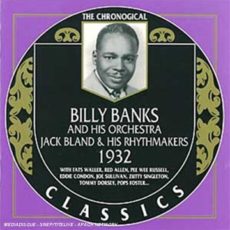
Daily Dose Of Jazz…
Jack Bland was born on May 8, 1899 in Sedalia, Missouri and learned to play the banjo. In 1924 he co-founded the Mound City Blue Blowers with Red McKenzie in St. Louis, Missouri. Their first hit record was Arkansas Blues, a success in Chicago and the American midwest. After Eddie Lang joined the group towards the end of 1924, they toured England.
The late 1920s saw Bland playing more cello and guitar and in 1929, Lang left the group, replaced by Gene Krupa. Also in 1929, the Blue Blowers appeared in a 1929 short film, The Opry House. Muggsy Spanier, Coleman Hawkins, and Eddie Condon would all play in the ensemble in the 1930s, which moved to more of a Dixieland sound.
Bland did session work in New York City with the Billy Banks Orchestra in the 1930s, with Pee Wee Russell, Red Allen, and Zutty Singleton. Following this, he recorded with a group called the Rhythmakers that included Pops Foster and Fats Waller at times.
By the 1940s Jack was playing on 52nd Street at Jimmy Ryan’s Club, playing with Allen and Singleton as well as Edmond Hall, Vic Dickenson, Ike Quebec, and Hot Lips Page. Some of their sessions were recorded by Milt Gabler and released on Commodore Records. From 1942 to 1944 he played with Art Hodes and also with Muggsy Spanier; he led his own band from 1944 to 1950.
In the 1950s, guitarist and banjoist Jack Bland moved to Los Angeles, California, retired from performing, and worked as a taxicab driver until he passed away in August 1968.
More Posts: banjo,cello,guitar,history,instrumental,jazz,music




